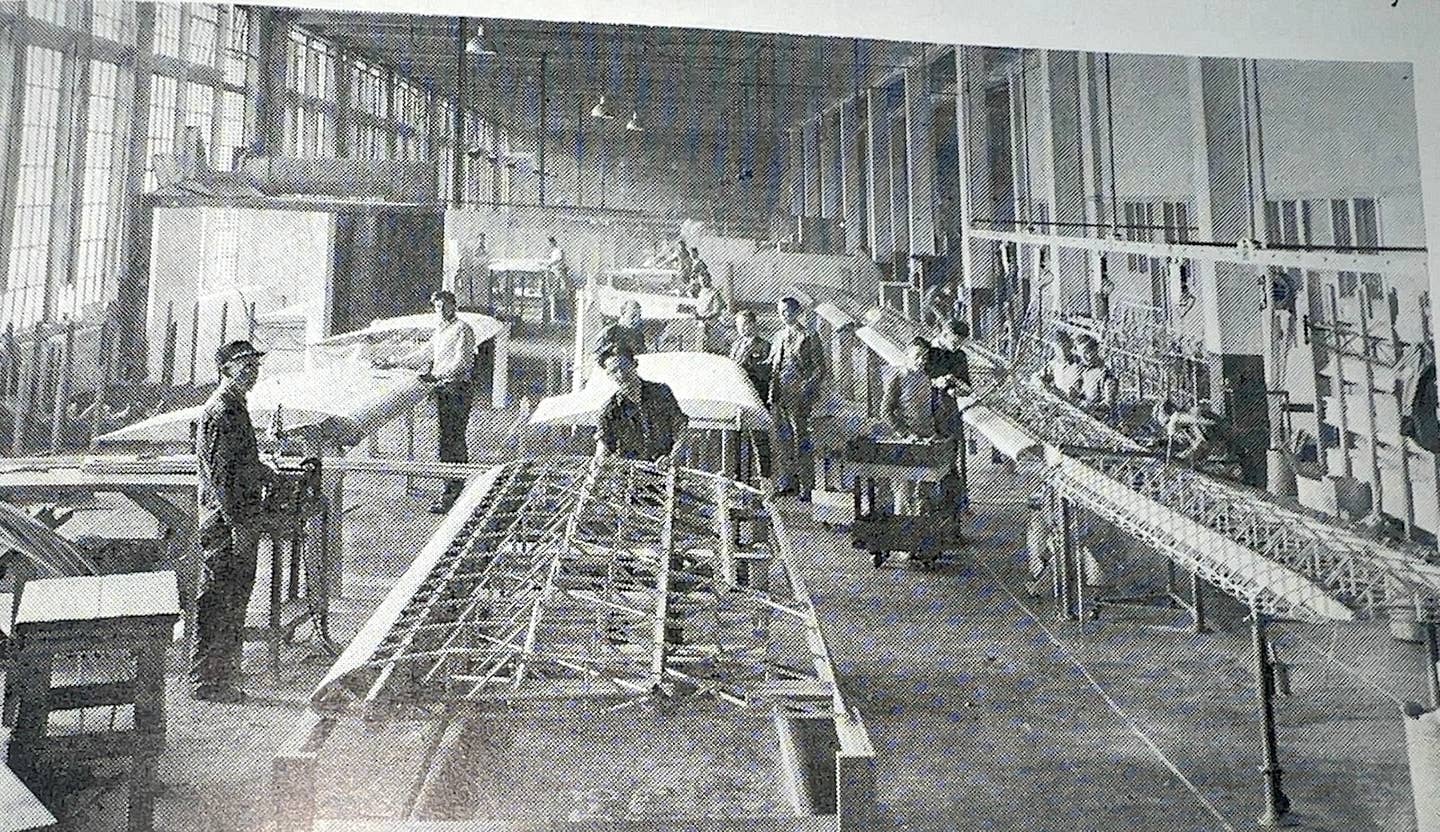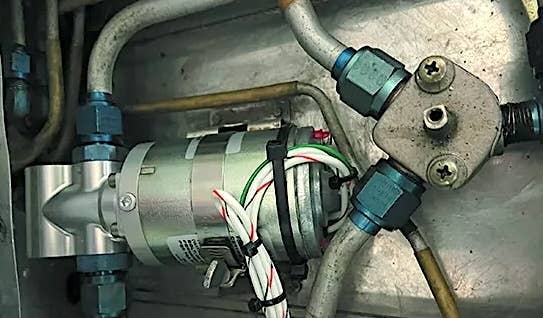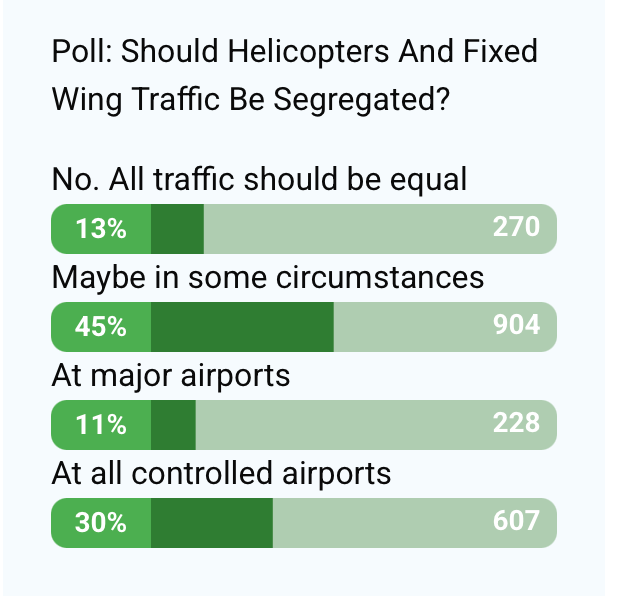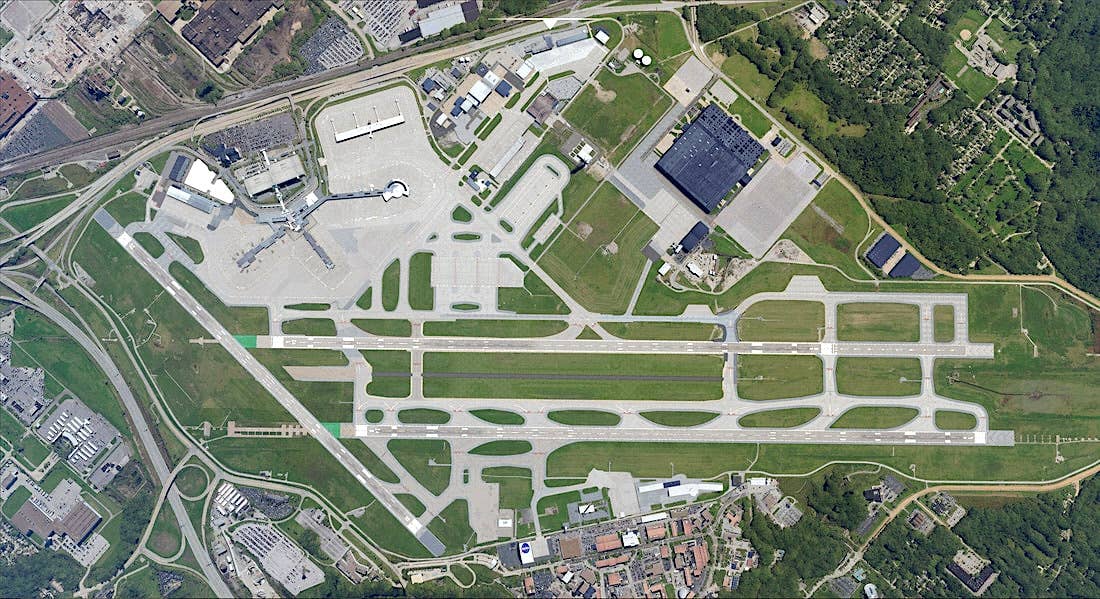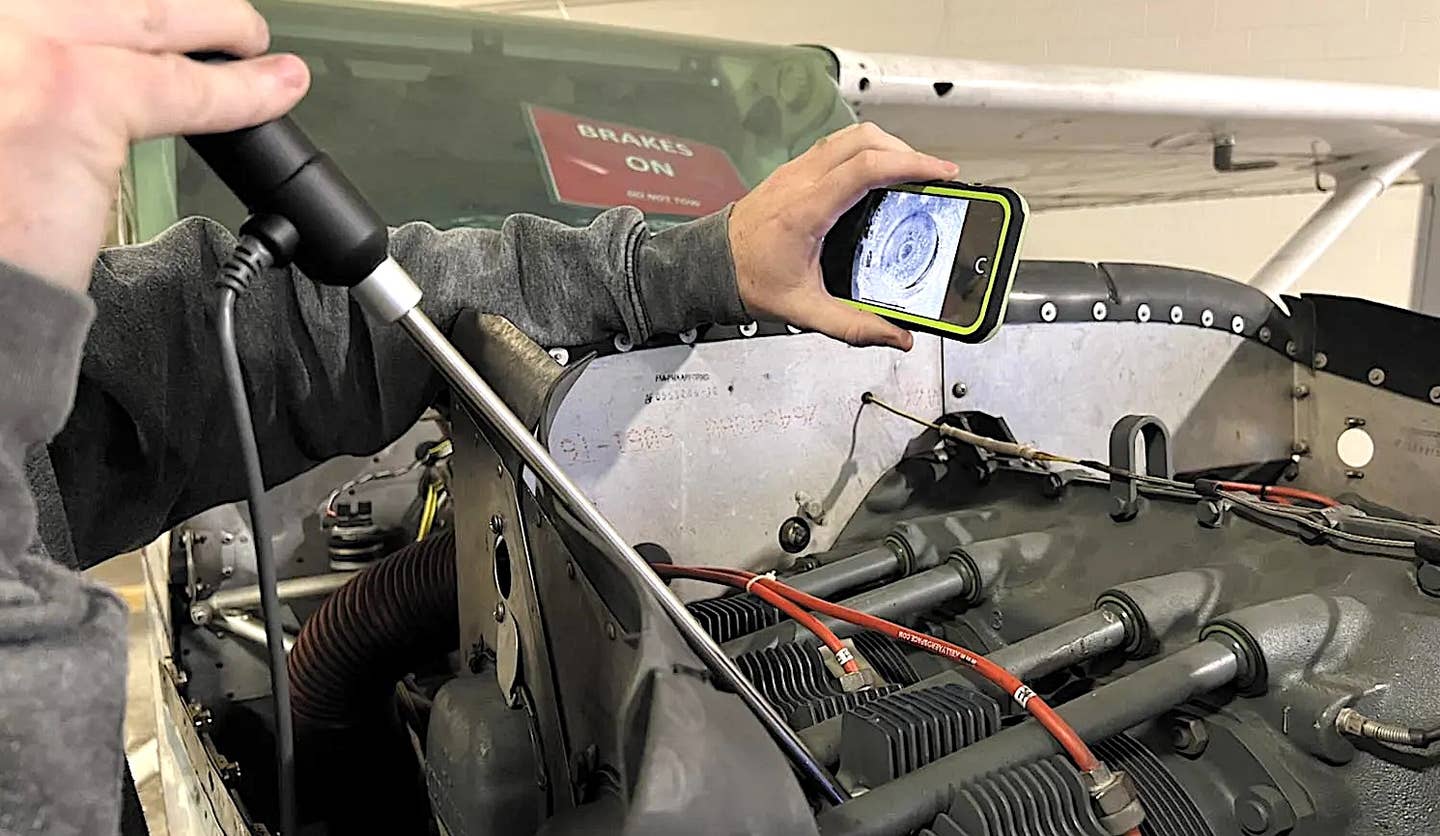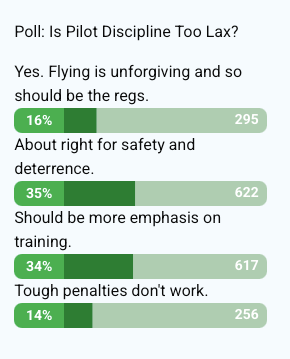Pelican’s Perch #86: Where Are the Eyes? — Part 2
Jet pilots don’t have the luxury of looking outside as much as piston pilots do during takeoff; but there are ways to do better.
In my last column we covered where I think pilots of light piston aircraft should be looking during takeoff and the initial-climb phases of flight, say to 1,000 feet AGL. In my opinion, virtually all attention should be outside the cockpit unless there are no outside references available to keep the airplane upright, climbing, and roughly on track. There is almost never a need for precise airspeed (certainly not Vx or Vy), continuing on the runway heading will suffice, and unless there are some really low restrictions, altitude doesn't matter, either.There are always those who want maximum precision in everything they do, and bless them. But in this case, maximum precision comes at the expense of safety. You need to be "eyes outside" in these aircraft. For the most part, GA aircraft operate in a target-rich environment, with lots of opportunity for close encounters of the wrong kind.Even with the new generation of glass cockpits (as with the Garmin G1000), I would not modify my suggestions. There's nothing there that is critical in that first 1,000 feet.Touching briefly on flight after the departure, including cruise, I see far too many pilots playing with the fancy modern stuff, as if maximizing the capabilities. Wrong approach, I think. I'm not fond of punching in a full route, because I'll never fly it anyway. Between vectors, weather, changes by ATC and frequent Direct clearances, most of that button-pushing is going to be wasted. Punch in the absolute minimum "stuff" you need to get the job done, and in some cases, that may be "departure.direct.destination." Learn to use the absolute minimum of keystrokes to do what is needed, then leave things alone. Just because you can do something with the fancy avionics doesn't mean you should do it.I'd also point out that the more buttons you push, the more likely you'll make a mistake that may just confuse the daylights out of you in a later, high-workload, high-stress situation. The KISS principle is appropriate here.So much for review; let's move on.
Large Aircraft With Two Pilots
It would be really easy to just include the big iron and say, "Airplanes are airplanes; they all fly the same."To tell the the truth, I was a little bit surprised at how much different my advice is when flying the Gulfstream IV or any high-performance jet. Until I started thinking about writing this column, I didn't realize how much more "heads-down" I am and how much more complicated it gets. Let's explore this a bit, and see how much of the difference is due to the nature of the airplanes, and how much is due to the environment in which we operate them.
The Takeoff Roll
With a piston aircraft, the proper technique is to place the aircraft in the liftoff attitude as the speed increases. This is not a "rotation"; it is simply a few degrees nose-high, just enough to fly off at some point safely above the stall speed. The actual lift-off airspeed is not critical. If mishandled, the airplane can be forced into the air well below the stall speed, because of the prop(s) blowing air over the wings.That doesn't work very well with jets. The liftoff attitude with most jets is much greater -- somewhere around 10 degrees due to the higher wing-loading, high-lift devices, and swept wings. If we were to place the aircraft in this attitude too soon, the drag would increase greatly, and in some of the older jets, the high drag will even prevent further acceleration. Since no air is being blown over the wings, there is no additional lift available. Lift can only come from airspeed and angle of attack in the jet. For these and other reasons, you will notice that jet aircraft accelerate in the level attitude (minimum drag), then rotate sharply to fly, lifting off as they pass through about 10-degrees pitch, on the way to 15- to 25-degrees pitch. Certification rules require the airspeed to stabilize in the climb at V2 with an engine out, or about V2+10 with all engines. Very early in the jet age, it was obvious that conditions were so variable, and acceleration so hard to judge, that a new speed was invented called Vr or rotation speed. The theory here is that if a pilot starts the nose up at Vr, and rotates the aircraft at roughly two degrees per second ("rotation" refers to change about the lateral axis), then the aircraft will stabilize at V2 (engine out) or V2+10 (all engines). There is usually 10 to 20 knots difference between Vr and V2.Jet takeoffs are based on three critical speeds. V1 is the "go or no-go" speed, and must be some above minimum control speed with an engine out. Vr must provide the proper timing to go from level to the attitude at V2 or V2+10, and V2 must provide the certification performance. Each speed can and does affect the others, so rather complex charts (or computers) are used to figure all this out in advance of every takeoff, and most of the time there are many options.With small, light jets (Citation, Lear, Eclipse), the range of weights is rather small, and these speeds don't change much. Many will just use "canned" speeds for most conditions. With the 747, V1 can range from about 115 (very light) to 160 knots when heavy. Guessing here will not suffice!Key here is the fact that the takeoff roll and rotation is absolutely mechanical and there is no "feel" or airmanship involved. The crew sets the thrust and watches the fun. Once the airplane becomes airborne, then pilots revert to feel and airmanship to regulate airspeed, attitude, and pitch rate.
How critical is all this? In a Citation, operating off a 10,000-foot runway, it's not critical at all, and pilots could probably just wing it. In a loaded 747, liftoff occurs with the aircraft eating up runway at a rate of 300 feet every second, and runway length is usually critical, so it's very important to be on the numbers.V1 is not as critical, in my opinion, as most pilots seem to think. Don't get me wrong: A high-speed abort right at V1 on a critical runway is a terrifying thing, but continuing the takeoff from well below V1 is almost a non-event, with plenty of real margin. For this reason, the concept of a "soft V1" has finally come into common use and pilots are slowly coming around to using lower V1 speeds, when available. My personal preference is to use the lowest permissible V1 on all takeoffs, and treat it as a soft V1. The briefing is, "Up to 80 knots, we'll abort for almost anything, from 80 knots to V1 we'll abort only for an item that makes the aircraft unflyable, like uncommanded reverse, engine failure, spoiler extension, etc. Approaching V1, I will take my hand off the thrust levers, and that is the signal that we'll take any problem into the air."A lot of people in a lot of airplanes have been killed by high-speed aborts, but (with one exception I know of) none have been killed by high-speed "gos." (The exception is AA191, a DC-10 taking off from Chicago O'Hare, May 25, 1979. That one is a case study all by itself.)We must get away from the old and common attitude, "I'd rather slide off the end of the runway than take an engine failure/fire into the air." Bad thinking!What on earth has all this performance junk to do with eyeballs? Hang on, there is a point here!In the jets, someone in the cockpit has to pay pretty careful attention to the airspeed indicators on the takeoff roll and, frankly, both pilots are well-advised to do so. The PFN (Pilot Not Flying) usually monitors and calls out key speeds, often "Airspeed alive," "60 knots," "80 knots, crosschecked," "V1," "Vr" (usually called as "Rotation"), "V2," and "Positive Rate."If both airspeed indicators don't come alive at about the same time, or if they don't both hit the benchmarks together, it's time to abort before the speed is so high that the runway length becomes critical. There are usually other things that should happen on the takeoff roll, too. So, where are the eyes? In my case, when I'm the PF (Pilot Flying), my attention is inside somewhat and outside a lot, with fairly quick changes, and the runway is always in my peripheral vision when I'm inside (back to the old T-6 in my previous column). At high speeds, a very small deviation in heading will produce a runway excursion -- not normally a good thing -- and I'm watching for other aircraft taxiing onto "my" runway. It's very hard to put numbers on this, but perhaps 80% outside, 20% inside. Heck, it might even be 50/50. The timing as to when we look inside and back out is important, too. If I know I'm past 80, but well before V1, my attention is mostly outside, because by then we've validated the airspeed indications, and there's not much going on inside. As we approach V1, I'll focus on the airspeed, and only peripherally on the runway. When I'm PNF, I'm paying just a bit more attention inside but still keeping an eye on the runway peripherally, to make sure the other pilot doesn't wander too much. That 80/20 is probably reversed for the PNF. It all happens very quickly, of course.So, for the takeoff roll in the Bonanza, it's balls to the wall, a quick check of ballpark fuel flow and engine-monitor readings very early in the roll, and basically ignore the panel thereafter, until a few hundred feet in the air. With the jet, there's a lot more to look at inside, even if there are two people. Maybe even because there are two!
Rotation Begins
The moment the nose starts up, the PF must focus pretty closely on the flight instruments, because the nose will quickly hide the view of the ground and there is nothing to give a sense of attitude. Pitch too little and the airspeed will run away, perhaps exceeding flap-speed limits, and climb performance will suffer. Pitch too much, and you may lose airspeed, endangering the aircraft. Control of the attitude is fairly critical here, and most jets have flight directors to help with this. The PNF will be monitoring all this, to see that everything is going right, so he'll be mostly looking inside, too. The result is that for the first 500- to 1,000-feet of climb, the typical jet operation is highly vulnerable to "other traffic," be it birds of the feathered kind or birds of the mechanical kind. Van Nuys tower is probably the best in the country, and they are very, very good at handling the mix of light aircraft using Runway 16L, and heavier stuff using 16R. The first few times they cleared me for takeoff with a light aircraft right there, I was a bit nervous, but they handle it so that by the time we'd hit the other aircraft, we're above it. But the thought of a student pilot making an early right turn into us still gives me the willies. Now transfer this operation to a busy, non-towered airport and things get really hairy.Van Nuys Runway 16R is also a critical noise-abatement runway, which increases the pilot workload immensely if done "The Gulfstream Way," so I won't use it. We rotate briskly to 20 degrees nose up, well above the flight director, and hold that way for just a few seconds. The altitude limit (1,700 MSL) is only 900 feet above the airport, so this one is very easy to blow, and there is that Southwest 737 just 1,000 feet above on the ILS to Burbank. At about 1,100 feet (300 feet above the runway), I lower the nose to the flight director pitch command bars, and this will produce a nice lowering of the nose to catch 1700 feet, while automatically reducing the thrust to hold 160 knots (manual speed). At that point we sail across the far end of the runway and the noise monitors in level flight, very low thrust, on a very precise track. That keeps the neighbors less unhappy (although they'll never be happy).Len Krugler, too. Who's Len Krugler? He's the noise boss at Van Nuys, and works very hard to keep it as quiet as possible. Good guy. First letter I ever got from him was something like, "Your takeoff the other morning was within limits, but from watching a lot of G-IVs take off, I know it can be done better." I spent the next two years getting the data from every takeoff and experimenting with different techniques. I'm pretty quiet, now. Well, my airplane is pretty quiet; my chief pilot thinks I make way too much noise.As we taxi into position on 16R, the VOR station is right there at the threshold, so DME is an accurate measure of how far into the takeoff we are. The far end of 16R is about 1.2 DME, and at only 2.2 DME, the procedure is to simultaneously turn left to 110 degrees, climb to 4,000 feet, and switch frequencies to SoCal Departure on 124.7. The PNF has to pull the gear, set that heading, set the altitude, and push the "Flight Level Change" button to give the PF all the proper indications, and change frequencies and talk, too.All this happens very, very quickly, and is rather carefully choreographed and briefed. It must be flown with precision, which means watching the instruments. There's just not much time left to look outside. I wish it were not so.I really like hand-flying, and used to do that any time below about 10,000 feet. I've gotten away from that now, and generally turn on the autopilot very early so that it does the precision work while I can divide my attention between making sure it's doing what I intend and traffic watch. This also relieves the PNF of a lot of work, so he can better watch and do his things. Maybe Airbus has this automation thing right, after all. I'm just not quite there yet.
The Departure and Arrival Procedures
350
There are more pressures to use the automation. Take a look at these "new" RNAV arrivals and departures.
These procedures require very high accuracy (in three dimensions), usually demanding full-up dual FMS systems, backed up by full-time GPS or DME-DME updating. Some operators now require them to be flown on autopilot, and some of the DPs require flipping the autopilot on as low as 500 feet AGL after takeoff. I'm coming to agree with that, as much as I prefer hand-flying.Does this use of automation free up the old Mark One eyeballs? Maybe. But pilots still need to monitor what's going on, and watching all this magic work is seductive. Even when things are going well, the eyes keep coming back to it -- inside.The saving grace here is that most of this stuff takes place in positive-control airspace of one kind or another, so "eyes out," airmanship and hand-flying skills have become less important than they used to be. So they say.
Old Instruments vs. New
There are other factors that draw our eyeballs inside too much. With the big, old, individual, mechanical altimeter, I could have my eyes looking outside and see motion on that instrument peripherally without even looking at it, and make a correction. Same for the airspeed and especially for the vertical speed. Now, with the vertical tape and/or digital displays, I have to deliberately look -- and look hard -- at the display and think about what it's trying to tell me. Kind-of like the difference between an old analog watch and a digital. A glance at the hands tells the story, but no one glances at the digits; they must read them. Some of the modern, glass displays have gone back to showing a video presentation of the old style, and I think that's a good thing. It is amazingly difficult to hand-fly a simple traffic pattern in the G-IV. For one thing, since we rarely do it, we don't get the practice, so we're not very good at it. Most end up just setting up the flight director to command heading and altitude, and guess where the eyes go in that situation? Inside, of course.We do get to take off and land at a few uncontrolled airports, and that is both a joy and a dread. The joy is that we can just fly like the light piston pilots do (eyes much more outside). The dread is that it's entirely up to us to look out for the others.I promise, I'll try to get my eyes outside more.Be careful, up there!
More from AVweb's Pelican is available here.

